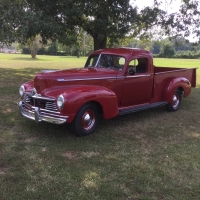Clutch sticking to pressure plate at start-up
June 11, 2020 Today, August 22, 2020
Today, August 22, 2020 The last time my ‘47 pickup was on the road was at the Sweethearts and Orphans meet in Denton, TX, 5 or 6 or 7 years ago. It has been relegated to a corner of the shop under a cover until this spring when I pulled it out to repaint all four fenders. I had a 2” X 2” wood rod between the seat frame and clutch pedal to hold the clutch pedal to the floor and keep the corks off the pressure plate
The last time my ‘47 pickup was on the road was at the Sweethearts and Orphans meet in Denton, TX, 5 or 6 or 7 years ago. It has been relegated to a corner of the shop under a cover until this spring when I pulled it out to repaint all four fenders. I had a 2” X 2” wood rod between the seat frame and clutch pedal to hold the clutch pedal to the floor and keep the corks off the pressure plate
 Today, August 22, 2020
Today, August 22, 2020 The last time my ‘47 pickup was on the road was at the Sweethearts and Orphans meet in Denton, TX, 5 or 6 or 7 years ago. It has been relegated to a corner of the shop under a cover until this spring when I pulled it out to repaint all four fenders. I had a 2” X 2” wood rod between the seat frame and clutch pedal to hold the clutch pedal to the floor and keep the corks off the pressure plate
The last time my ‘47 pickup was on the road was at the Sweethearts and Orphans meet in Denton, TX, 5 or 6 or 7 years ago. It has been relegated to a corner of the shop under a cover until this spring when I pulled it out to repaint all four fenders. I had a 2” X 2” wood rod between the seat frame and clutch pedal to hold the clutch pedal to the floor and keep the corks off the pressure plateToday, after a couple of intense days of putting everything back together, I fired it up for the first time. It started as normal. I played with the carburetor, tightened coolant hose clamps, etc. Ran it around the property, shut it off, fiddled some more, started again as normal, ran it up the road about a mile and back and shut it down.
After about a half hour I attempted to start again and it acted like the clutch plate was stuck to the pressure plate. The shift lever was in first and although the clutch pedal was on the floor, the starter motor was moving the truck forward. I moved the shift lever to neutral and the truck started, but now the gears clashed when I attempted to move to any gear.
That surprised me because the first couple of starts were normal, and the shifts were normal.
Any suggestions on what’s gone wrong here and what I might do to get back to normal starting?
Thanks. Tom
That surprised me because the first couple of starts were normal, and the shifts were normal.
Any suggestions on what’s gone wrong here and what I might do to get back to normal starting?
Thanks. Tom
0
Comments
-
Heat soak of the corks expanded their size and now contact the pressure plate even when the pedal is depressed. This condition can occur when the pieces are rearranged. My friend Charlie Houge once explained to me that his solution to this problem was put the front bumper of the Hudson against a mature tree and slip the clutch a few times. Seemed to work for him... last car I saw him do this to was a 52 Pacemaker he bought from from me in the 1980s. Good luck with it this should be okay after a few slipped clutch starts.0
-
Thanks for the responses.
I always try to follow up when I post a question on this or one of the other old-car forums I watch. I think it’s rude to ask something and then disappear. The folks who were kind enough to take the time to share their knowledge and experience might never know if that was time well spent.
In any case, I’m finally able to get back under the Hudson after Hurricane Laura passed through (no damage to my stuff, thankfully) and this is a partial follow-up.
I did find the clutch pedal free play to exceed 1-1/2”. I adjusted that. I have drained out the old clutch fluid and have put in the flushing mix. I’ll post again when I’ve gone through the whole drill
I’m not sure I’m brave enough to push against any trees yet, but if it comes to that, the oak behind the truck in the above picture ought to be mature enough
Tom0 -
Also make sure the link is connected to the inner hole, to give more movement to the throw-out fingers.0
-
There was mention on here a week or 3 ago about pressure plate throw-out fingers going over centre and staying stuck in that position. Is that a real possibility and are you getting close to that situation using the inner link hole?0
-
Hi all
When I put this together I was following the instructions on page 140 of the ‘42 to ‘47 Shop Manual. (The upper paragraph shown)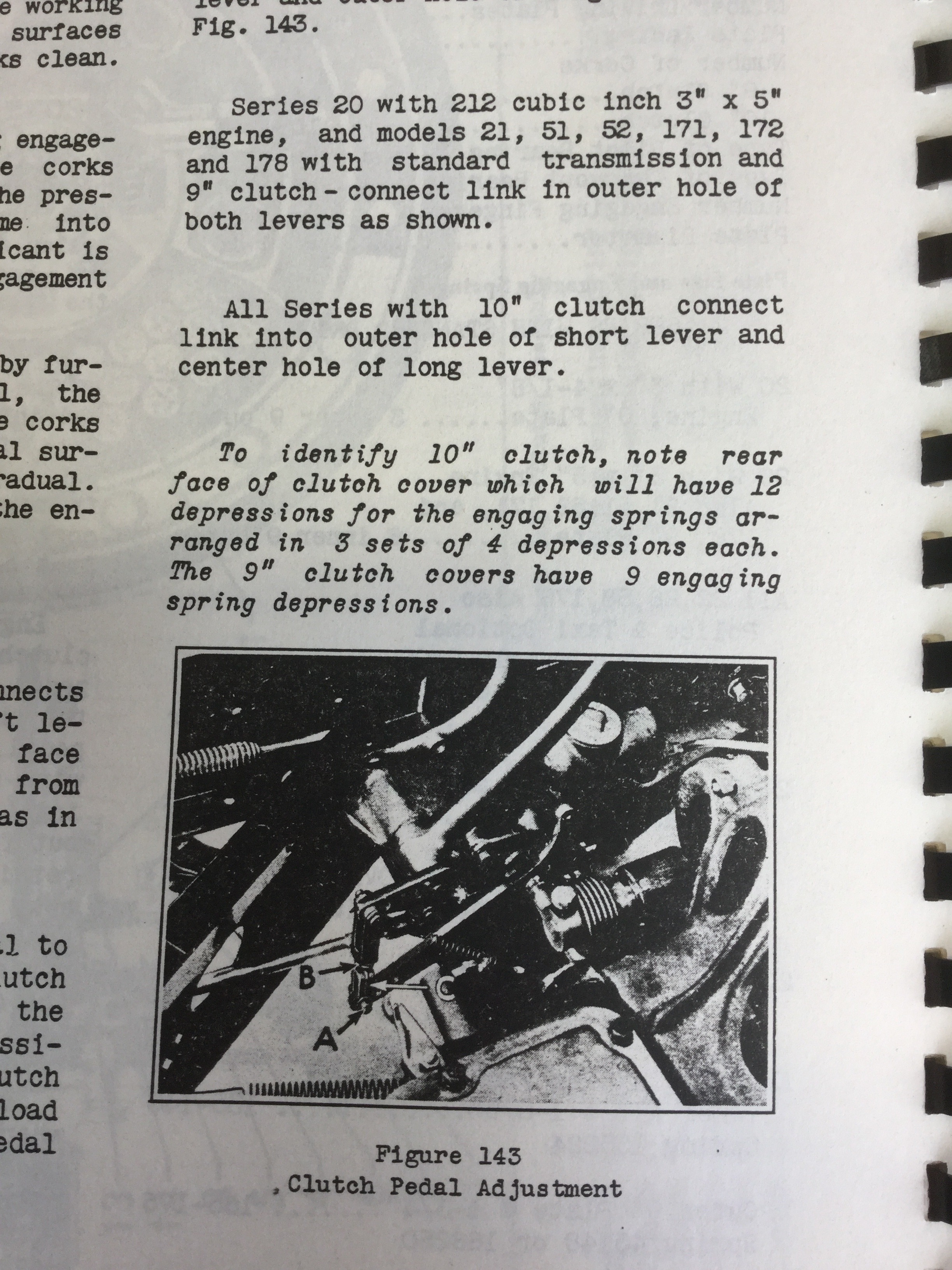
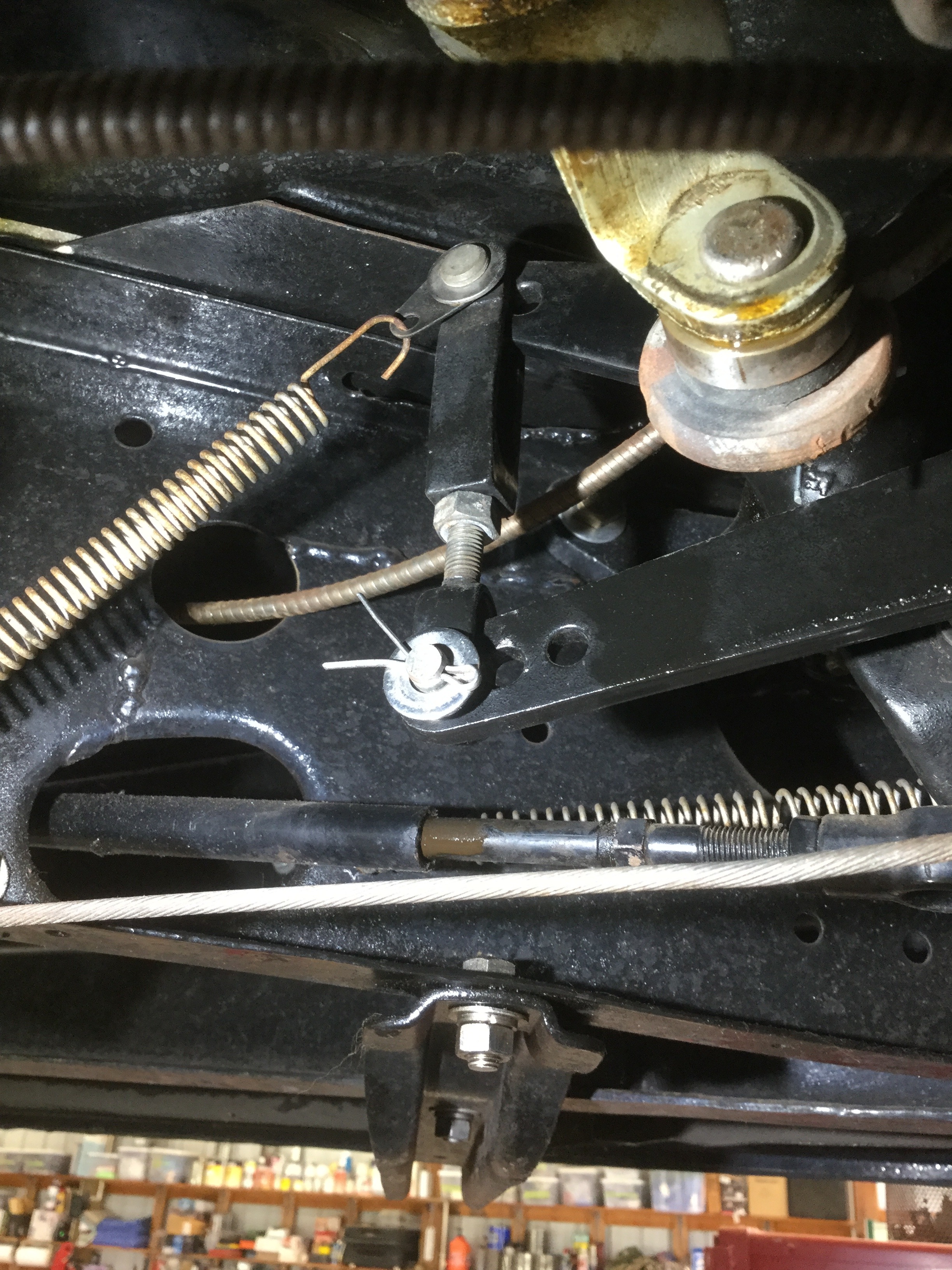 So is the consensus here that I should adjust pedal free play to about 3/4 inch using the inner hole in the bottom lever?
So is the consensus here that I should adjust pedal free play to about 3/4 inch using the inner hole in the bottom lever?
Thanks, Tom0 -
Yup!!!
0 -
Another follow-up. I did all the flushing and refilling of fluid as recommended above. I attempted to adjust the pedal free play to 3/4 inch by using the inner hole in the lever. The first thing I noticed was that the rubber pads on the ears on the coupling lever no longer contacted the ears on the lever on the yoke shaft.
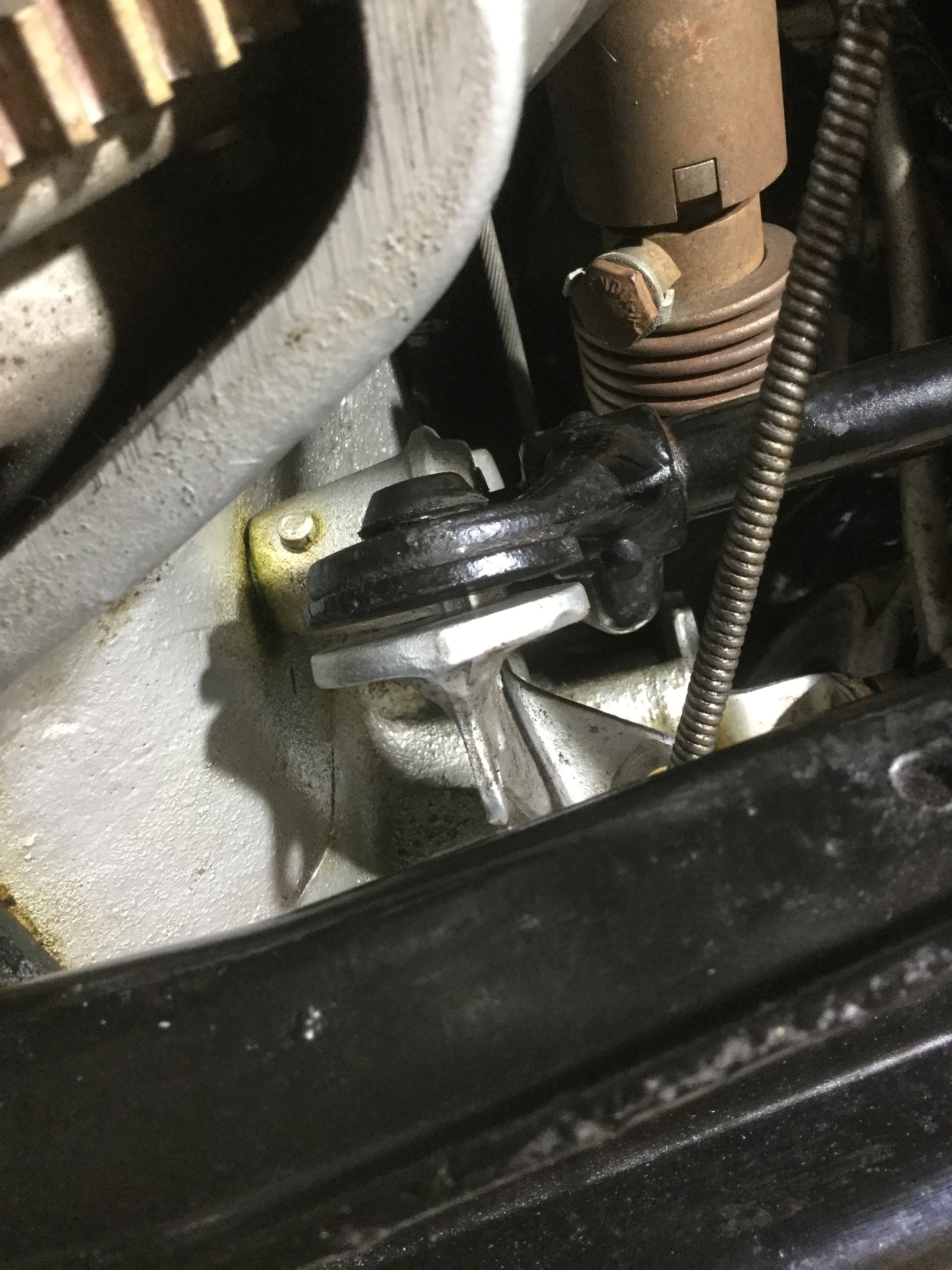 That meant that no matter how close to the floorboard I adjusted the pedal, the clutch engagement wouldn’t start until those pads touched. I started the engine and worked the pedal 50 times. When I manually reached down and pulled the pedal up I got a loud metal-to-metal clicking noise. When the pedal was depressed again, there was no resistance going right to the floorboard.
That meant that no matter how close to the floorboard I adjusted the pedal, the clutch engagement wouldn’t start until those pads touched. I started the engine and worked the pedal 50 times. When I manually reached down and pulled the pedal up I got a loud metal-to-metal clicking noise. When the pedal was depressed again, there was no resistance going right to the floorboard.
I shut it down and got back under to see what else I could find. The thing that jumped out at me this time was that I could feel the opposite end of the yoke shaft was not engaged in the hole in the right side of the bell housing.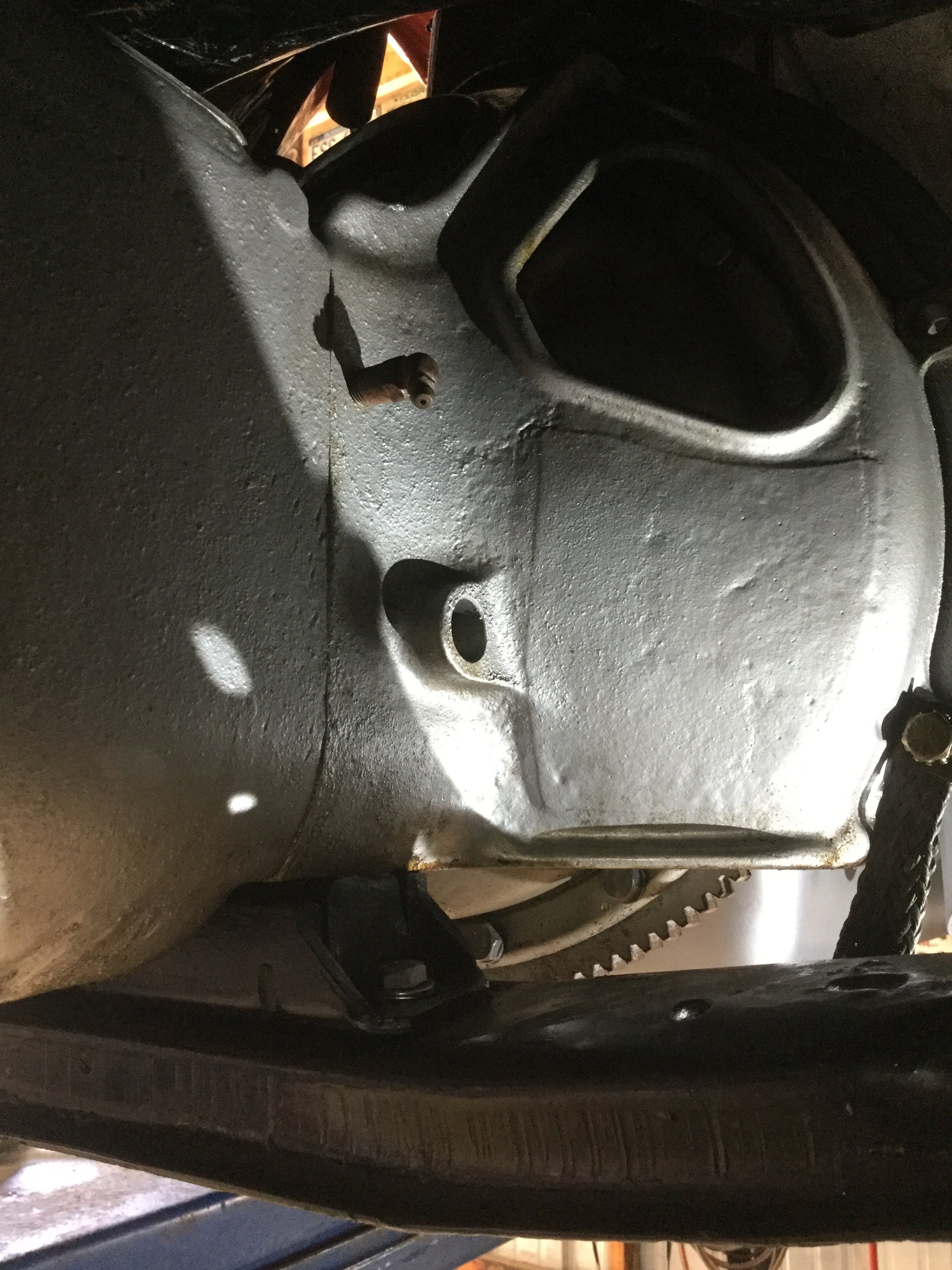 I am assuming that the only way to get that shaft back in the bell housing is to take everything out again and find out what allowed the shaft to move out in the first place. Too bad I didn’t see this when I had the engine and transmission out a couple of months ago. The good news is that I found it while the truck is in my shop and not out on the road.
I am assuming that the only way to get that shaft back in the bell housing is to take everything out again and find out what allowed the shaft to move out in the first place. Too bad I didn’t see this when I had the engine and transmission out a couple of months ago. The good news is that I found it while the truck is in my shop and not out on the road.
Tom0 -
Another follow-up. Erwin Sanchez-Flores and I took the engine and transmission back out. I was wrong about the clutch cross shaft being out of the hole in the bell housing. It’s just short from the factory. The shaft was very worn.
We did notice that the throw out bearing had somehow rotated in the housing and the forks were not engaging on the flats as they are supposed to.
This is what the flywheel and pressure plate surfaces looked like.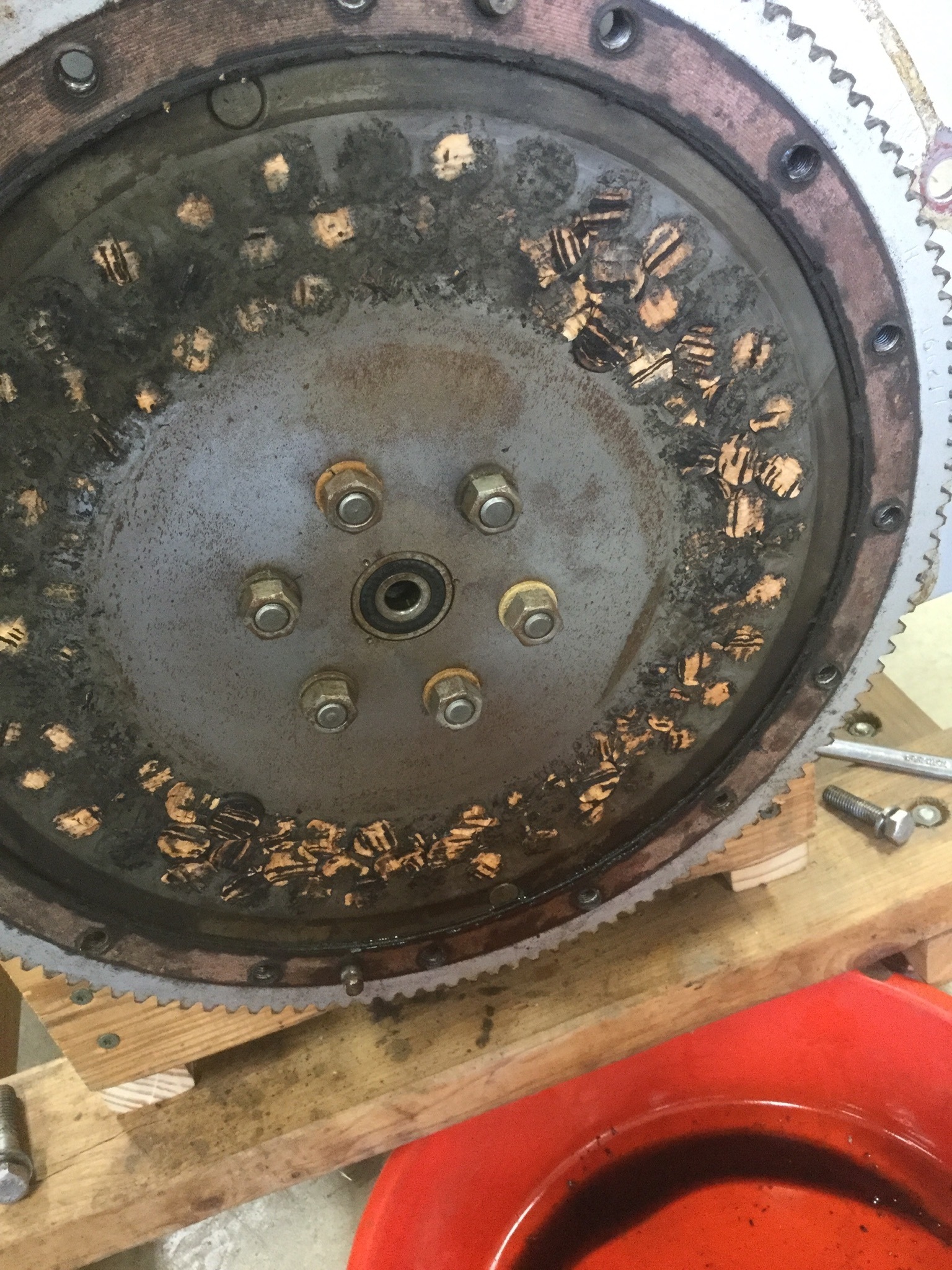
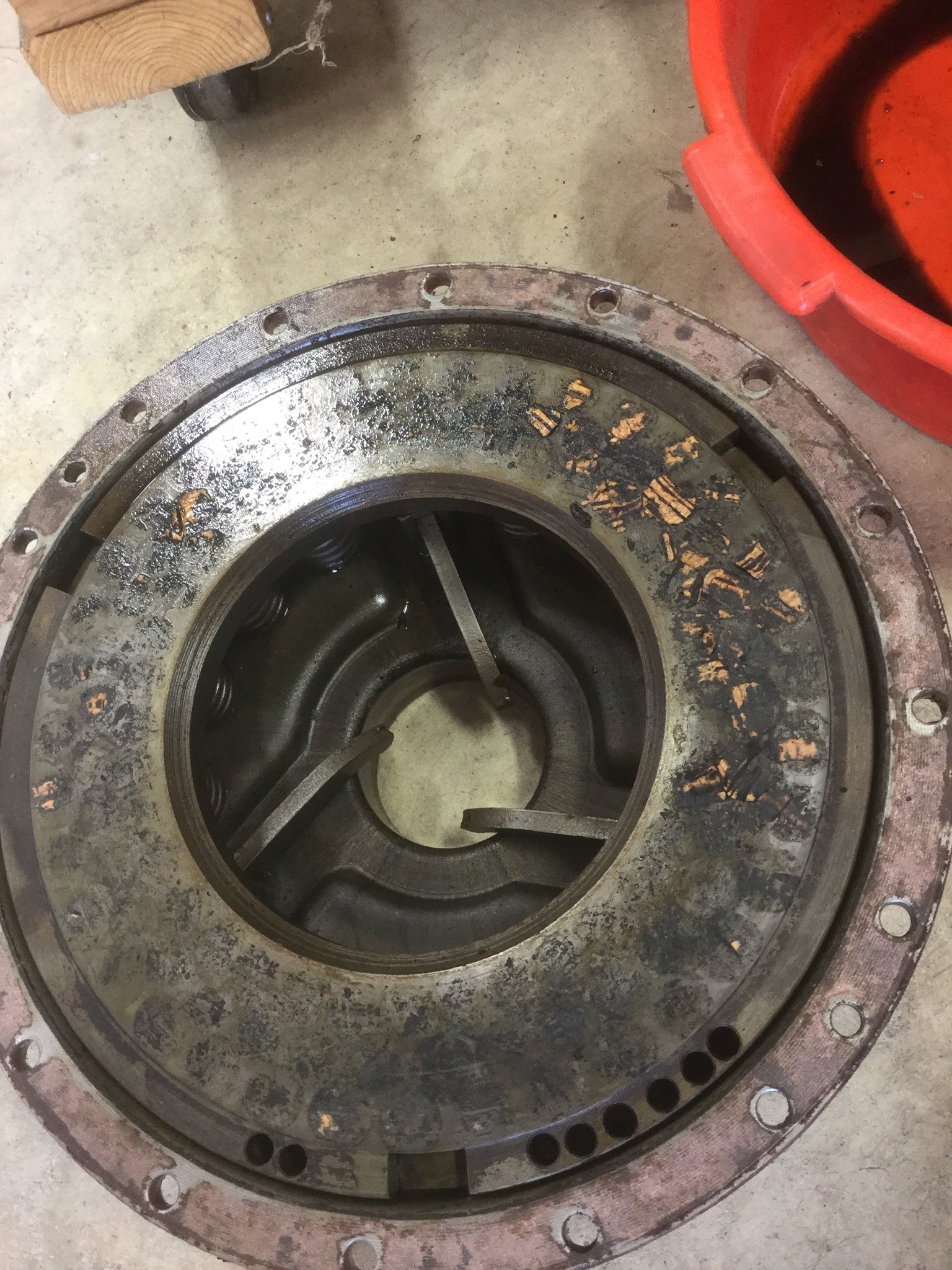 Time for new corks.
Time for new corks.
Ron Fellows quickly rebuilt the pressure plate assembly and clutch disc and throw out bearing, and even the Postal Service cooperated. I think I had everything back from Ron 10 days after I sent it off.
Erwin and I each machined a new cross shaft. Here’s a picture of Erwin carefully watching a digital readout he fabricated for his milling machine as he works on the shaft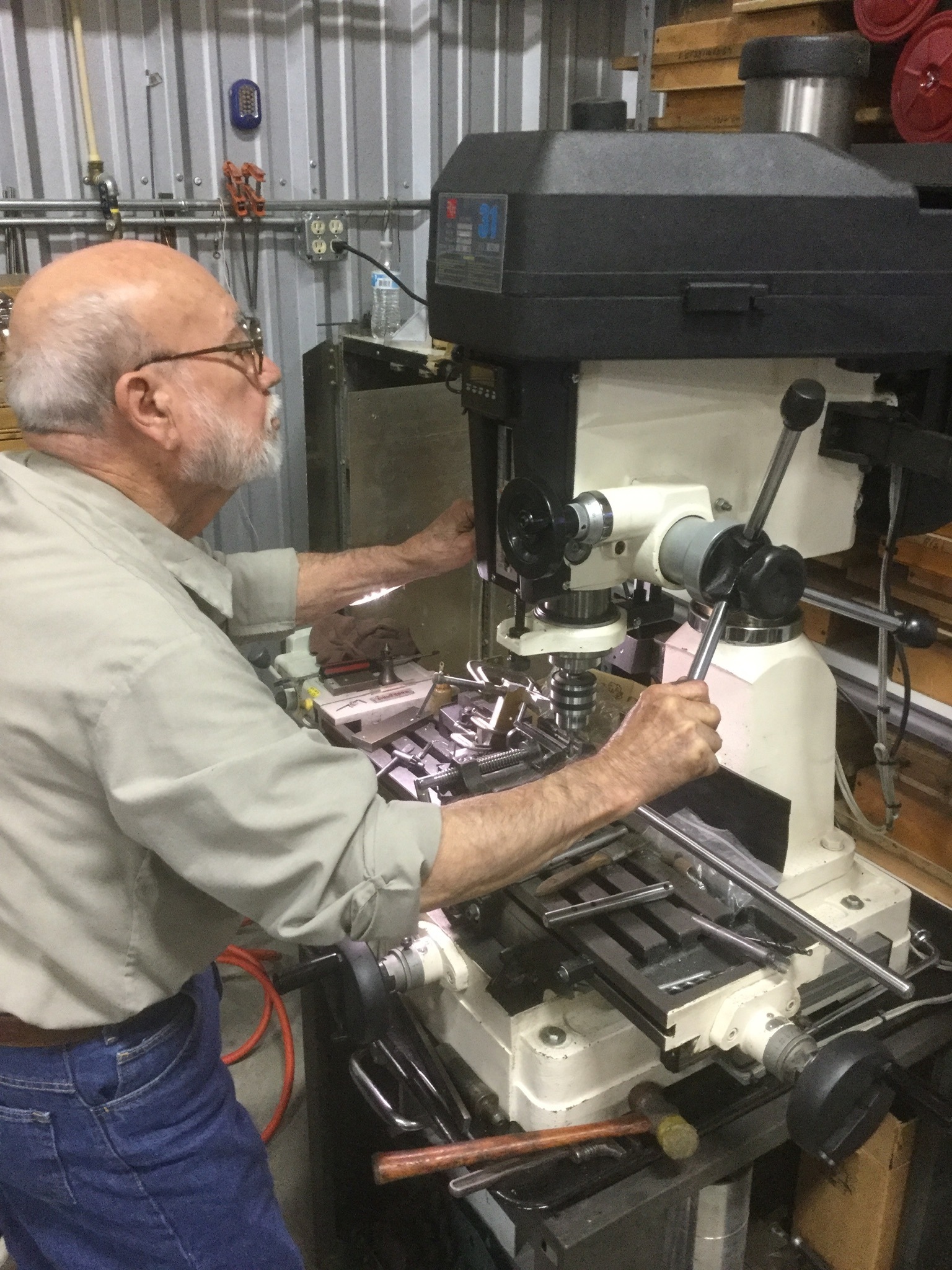 I used the shaft he made rather than the one I made. I used new bushings for the shaft as some of the old ones were worn right through. I found those thin wall bushings at the auto electrical shop I’ve used for years to rebuild starters and generators.I finally got everything installed again and took the truck out for a test run yesterday. The clutch engaged as I thought it should and there was no chatter or starting issues. The next time Erwin visits my home I’ll take him for a ride and get his assessment.
I used the shaft he made rather than the one I made. I used new bushings for the shaft as some of the old ones were worn right through. I found those thin wall bushings at the auto electrical shop I’ve used for years to rebuild starters and generators.I finally got everything installed again and took the truck out for a test run yesterday. The clutch engaged as I thought it should and there was no chatter or starting issues. The next time Erwin visits my home I’ll take him for a ride and get his assessment.
Tom0 -
Thanks Tom for the update. Elliot is a great fellow and friend, his knowledge of Hudsons is always spot on. Good to know you sorted out your truck.0
-
Ha ha! Not gonna suck me into responding this time. So you remember that previous post, eh?
Tom0
Categories
- 36.9K All Categories
- 113 Hudson 1916 - 1929
- 20 Upcoming Events
- 93 Essex Super 6
- 28.6K HUDSON
- 574 "How To" - Skills, mechanical and other wise
- 995 Street Rods
- 151 American Motors
- 180 The Flathead Forum
- 49 Manuals, etc,.
- 78 Hudson 8
- 44 FORUM - Instructions and Tips on using the forum
- 2.8K CLASSIFIEDS
- 608 Vehicles
- 2.2K Parts & Pieces
- 77 Literature & Memorabilia
- Hudson 1916 - 1929 Yahoo Groups Archived Photos
